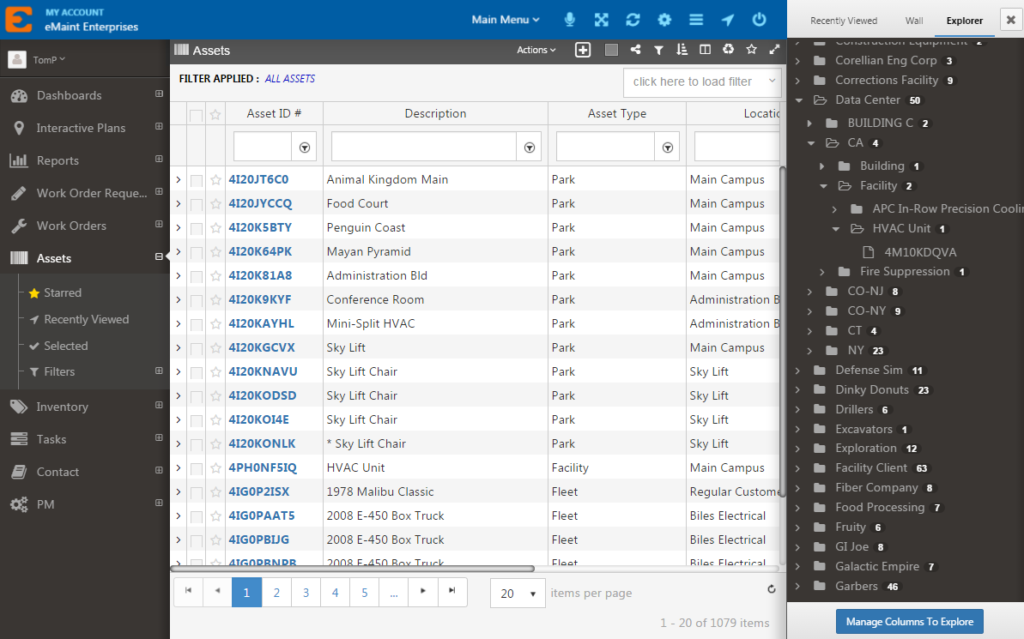What is an Asset?
By definition, asset are valuable or extremely useful items. Every organization looks to maximize asset life and increase overall efficiency. Leveraging the tools within a CMMS can help drive operational excellence, regardless of whether operation is production, providing services, managing maintenance on healthcare equipment and more.
A CMMS provides a central storage location for the majority of data and information for your assets. It also manages and controls your work and materials management/parts usage processes, and tracks maintenance activity over the lifecycle of an asset.
To Extend the Life of Assets using a CMMS, users can:
- Deploy equipment hierarchy and history tracking
- Store and display assets in a hierarchical structure
- Relate parts and Bills of Materials to assets
- Define and understand importance of Asset Criticality (PM intervals, priorities, etc.)
- Deploy visibility to all work history and charges related to assets

Asset management tools help organizations Establish Action-Based Maintenance by:
- Documenting and inspecting specifics to predict or detect defects and symptoms that result in failures
- Scheduling maintenance as needed based on analysis of asset condition data
- Reducing downtime by control of relevant failures (a failure that can occur or recur during the operational life of an asset)
- Driving Reliability Deficiency Analysis (an evaluation of asset performance to determine the optimum improvement course for reliability improvement).
Reduce Maintenance Costs by:
- Reducing worker overtime hours
- Lowering percentage of waste spoilage (defect elimination)
- Reducing equipment downtime
- Increasing planned vs. reactive maintenance (unplanned)
- Reducing spare parts inventory
- Track warranty information
Help facilitate Defect Elimination Tracking by:
- Eliminating basic defects
- Eliminating operational defects
- Eliminating maintenance defects
- Eliminating design defects
- Eliminating defects by mistake proofing
Improve Customer Satisfaction by:
- Generating automated alerts when customer requests are approved, rejected and completed
- Routing requests to designated individuals for approval
- Scheduling customized emails and surveys to be sent to customers
For even more information on asset management, including ISO compliance, planning a capital replacement program and more, visit our library of recorded webinars.
